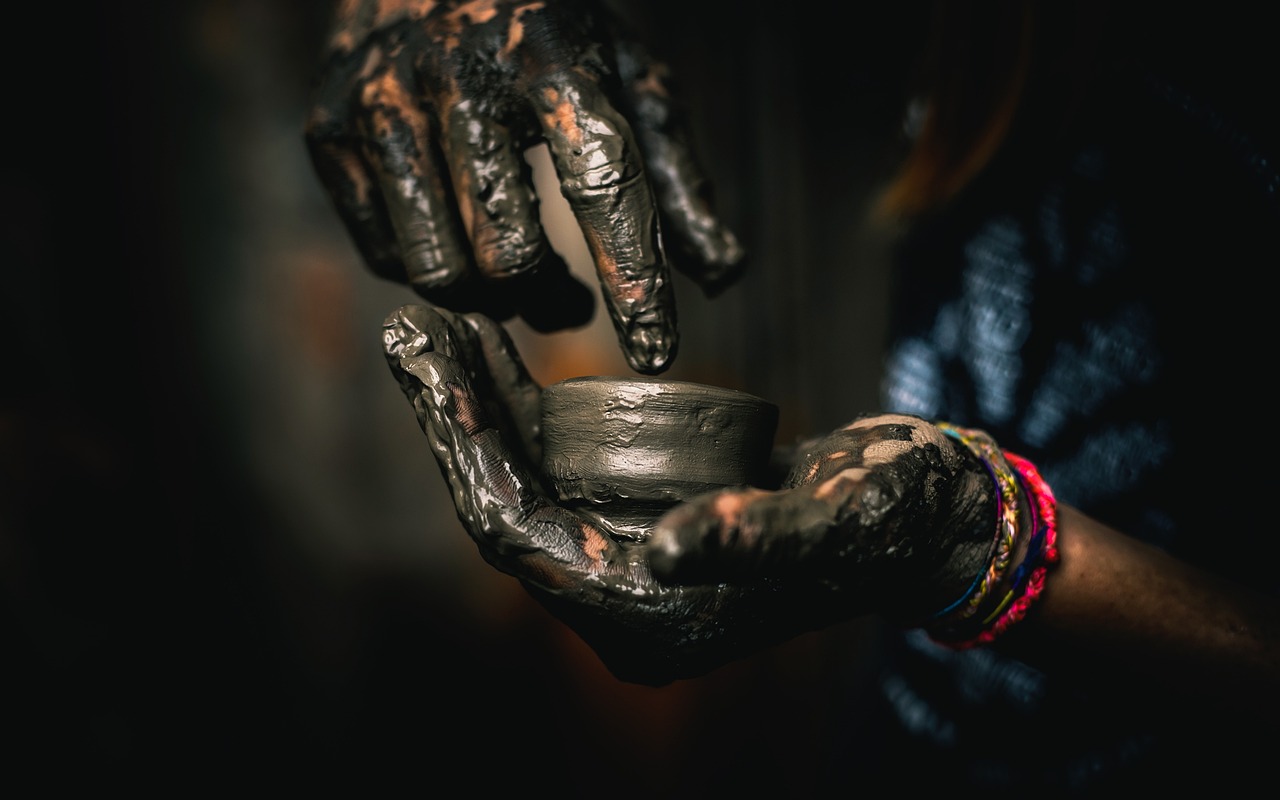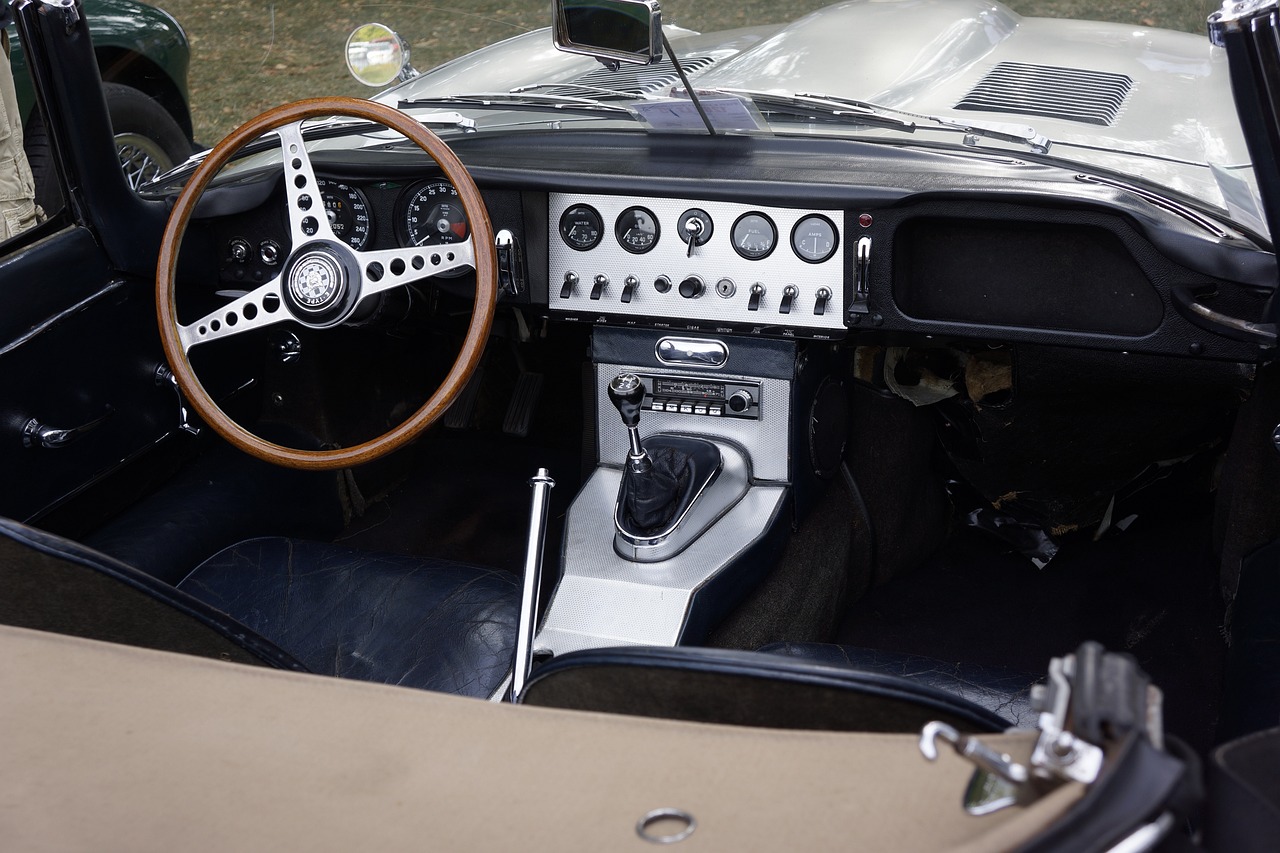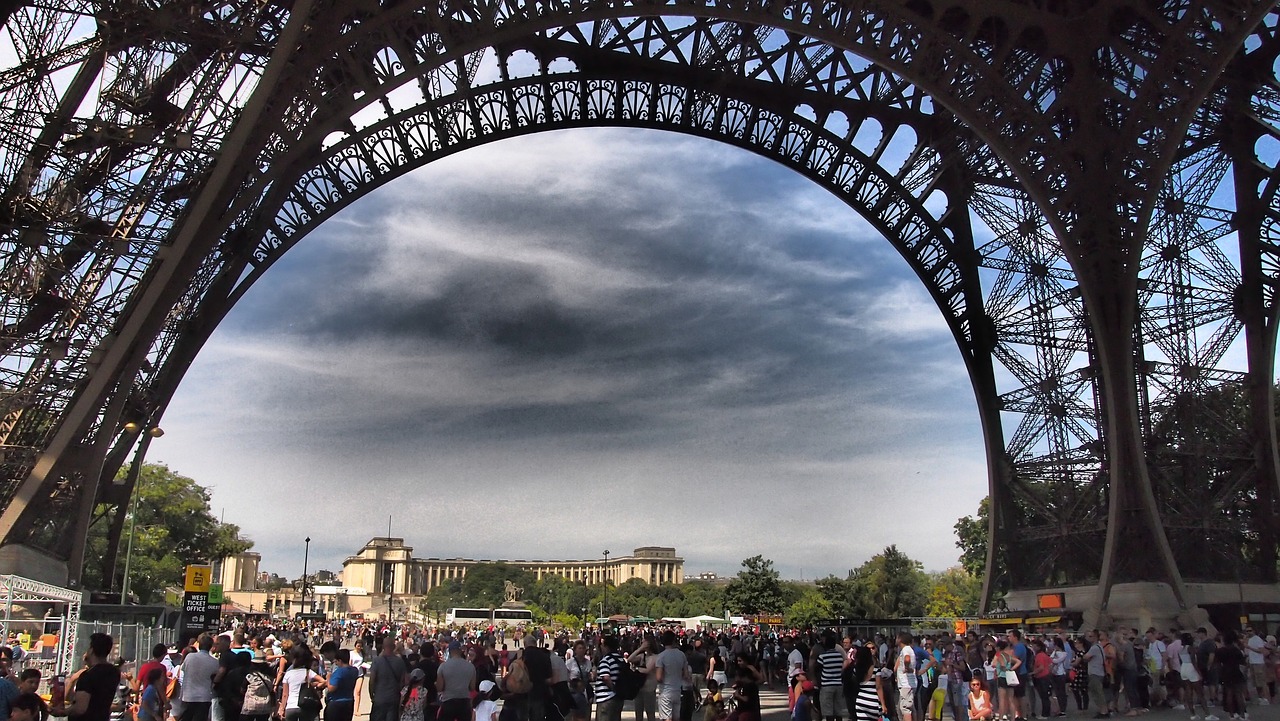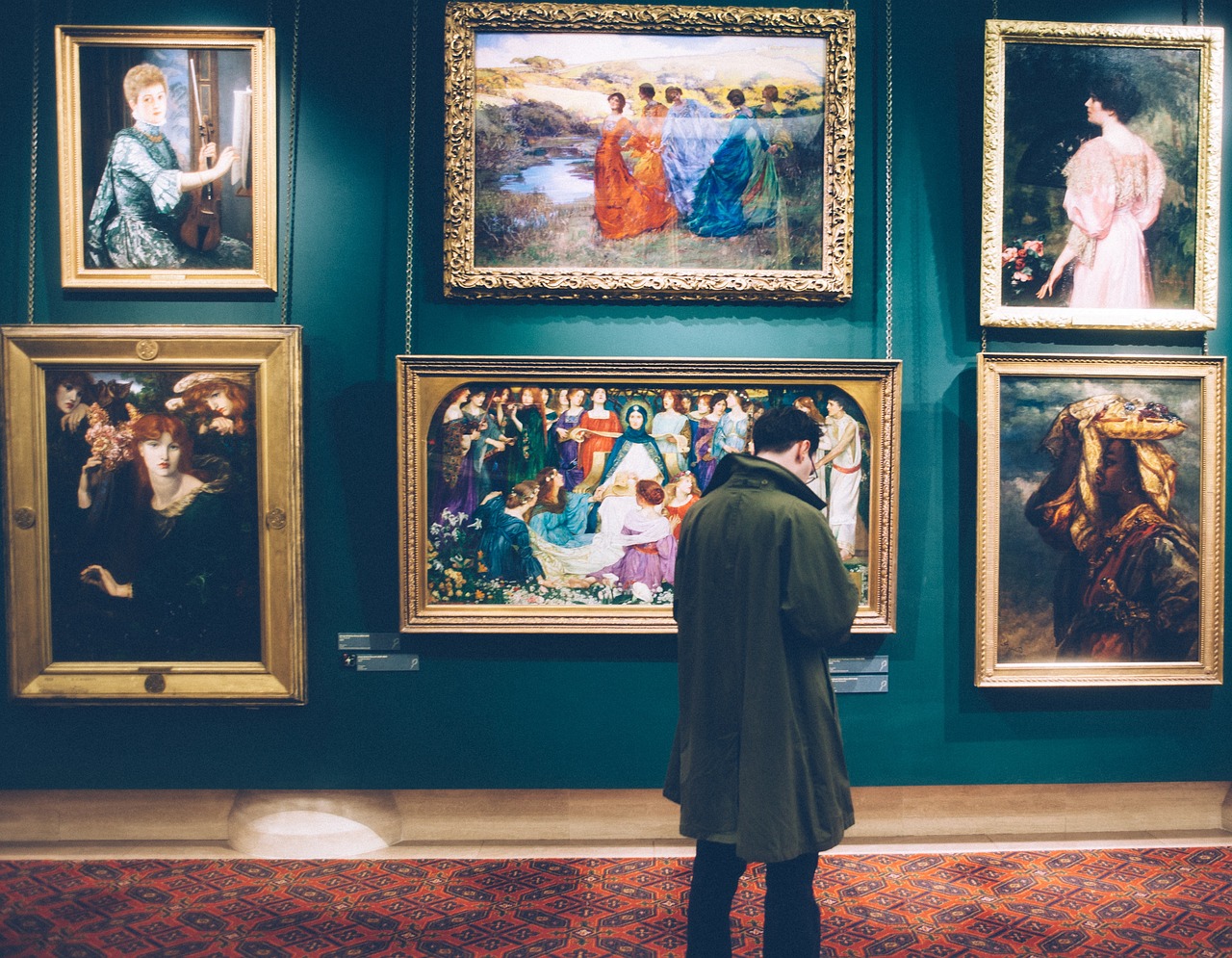How to Exhibit Your Paintings Locally
Exhibiting your paintings locally is not just about hanging your artwork on a wall; it's an opportunity to connect with your community, share your passion, and potentially sell your pieces. Whether you're a seasoned artist or just starting out, showcasing your work can be a thrilling experience. This article explores effective strategies for showcasing your artwork in local venues, attracting potential buyers, and building a community presence. Discover tips on networking, promotion, and creating an engaging exhibition experience that will leave a lasting impression on your audience.
When it comes to exhibiting your artwork, selecting an appropriate location is crucial for your exhibition's success. Think of your venue as the stage for your art; it should not only reflect your style but also cater to your audience. Consider factors such as foot traffic, ambiance, and accessibility. A bustling café or a local gallery with a good reputation can draw in art enthusiasts, while a community center may attract families and casual viewers. The right venue can make all the difference in ensuring your paintings reach the right audience.
Properly preparing your paintings for display can enhance their appeal significantly. This involves more than just hanging them up; it includes framing, labeling, and ensuring that your pieces are in excellent condition. A well-prepared artwork not only attracts viewers but also conveys professionalism and care. Imagine walking into an exhibition where every piece is meticulously presented; it creates an atmosphere of respect for the artist and the art itself. Therefore, take the time to prepare your paintings properly before the big day.
The right frame can elevate your artwork's presentation to new heights. Think of framing as the outfit your painting wears; it should complement your style and enhance the visual impact. There are various framing options available, from sleek modern frames to ornate traditional ones. Consider the mood of your artwork when choosing a frame. For instance, a vibrant abstract piece might benefit from a simple black frame, allowing the colors to pop, while a classic landscape could shine in a more ornate frame. The framing choice can make a world of difference in how your art is perceived.
When it comes to framing, selecting high-quality materials is essential. Here are some materials to consider:
- Frames: Wooden frames can add warmth, while metal frames offer a contemporary feel.
- Mats: A good mat can provide a visual buffer between your artwork and the frame, enhancing its presentation.
- Glass Options: Consider UV-protective glass to safeguard your work from fading over time.
Investing in quality materials not only protects your artwork but also showcases it effectively, making it more appealing to potential buyers.
Clear and informative labels help viewers connect with your paintings. Think of labels as the storytelling element of your exhibition; they provide context and enhance the viewer's experience. When creating labels, include the title of the painting, the medium used, and a brief description or story behind the piece. This personal touch can spark conversations and intrigue viewers, making them feel more connected to your work. Ensure that the labels are easy to read and placed at eye level, so they don't disrupt the viewing experience.
A well-curated display can significantly impact how your artwork is perceived. Imagine walking into a room where the paintings are arranged in a way that tells a story or guides you through an emotional journey. To achieve this, consider grouping your pieces by theme, color, or style. Think about the flow of the exhibition space and how viewers will move through it. A cohesive display not only enhances the visual impact but also allows viewers to engage with your artwork on a deeper level.
Effective promotion is key to attracting visitors to your exhibition. You could have the most stunning artwork, but if no one knows about it, your efforts may go unnoticed. Utilize various marketing strategies to spread the word and generate excitement around your event. This could include creating eye-catching flyers, sending out press releases, or even hosting a preview event for local influencers and art critics.
In today's digital age, leveraging social media platforms can help you reach a broader audience. Create engaging posts that highlight your artwork and share exhibition details. Use high-quality images, behind-the-scenes content, and even videos to draw in your audience. Don't forget to engage with your followers by responding to comments and encouraging them to share your posts. Social media can be a powerful tool in building buzz around your exhibition.
Building connections with fellow artists can enhance your exhibition's visibility. Collaborating with other artists can create a sense of community and support. Consider hosting joint exhibitions or cross-promoting each other's work. By working together, you can tap into each other's audiences and create a more vibrant art scene in your area.
1. How do I choose the right venue for my exhibition?
Look for locations with high foot traffic, good ambiance, and accessibility. Consider venues that align with your art style and target audience.
2. What should I include in my labels?
Include the title, medium, and a brief description or story behind each piece to engage viewers and provide context.
3. How can I effectively promote my exhibition?
Utilize social media, create flyers, send press releases, and network with local artists to spread the word about your exhibition.

Choosing the Right Venue
When it comes to exhibiting your paintings, the venue you choose can make all the difference between a successful showcase and a missed opportunity. Think of your venue as the stage where your artwork will perform; it needs to be just right to captivate your audience. First and foremost, consider the location. Is it easily accessible? Is it in a bustling area where foot traffic is guaranteed? You want your artwork to be seen, so choosing a place that attracts visitors naturally is essential.
Next, let's talk about the ambiance of the venue. The atmosphere should resonate with your artistic style and the emotions you want your paintings to convey. For instance, if your artwork features vibrant colors and dynamic themes, a bright, open space would complement it beautifully. On the other hand, if your pieces are more subdued and introspective, a cozy, intimate setting might enhance the viewer's experience. Remember, the venue should act as a canvas for your art, not overshadow it.
Accessibility is another critical factor. Ensure that the venue is wheelchair accessible and has adequate parking or public transport links. You want everyone to have the opportunity to enjoy your work, regardless of their mobility. A venue that is difficult to reach can deter potential visitors, so do your research. Consider creating a table to compare potential venues based on key factors:
| Venue Name | Location | Ambiance | Accessibility | Foot Traffic |
|---|---|---|---|---|
| Art Gallery A | Downtown | Modern | Yes | High |
| Café B | Suburb | Cozy | Yes | Medium |
| Community Center C | City Center | Neutral | No | High |
After gathering this information, you can make a more informed decision. Additionally, think about the size of the venue. A small space can create an intimate setting, but if your collection is extensive, it might feel cramped. Conversely, a large venue can make your artwork feel lost if not displayed thoughtfully. It's all about finding that perfect balance.
Lastly, don't underestimate the power of community. Choosing a venue that is well-regarded in your local art scene can provide a significant boost to your exhibition. Local galleries, community centers, and even cafes that support local artists can be excellent options. They often have established audiences who appreciate art, which can lead to higher engagement and potential sales. So, take your time, explore various venues, and select one that aligns with your artistic vision and goals.
- What factors should I consider when choosing a venue? Consider location, ambiance, accessibility, size, and community reputation.
- How can I find local venues for my exhibition? Research online, visit local art events, or connect with other artists for recommendations.
- Should I visit the venue before making a decision? Absolutely! Visiting in person allows you to assess the space and envision your artwork in that setting.

Preparing Your Artwork
When it comes to showcasing your paintings, the preparation of your artwork is just as vital as the exhibition itself. Think of your art as a star performer; if it’s not dressed for the occasion, it might not shine as brightly as it could. Properly preparing your paintings can significantly enhance their appeal and ensure they grab the attention of potential buyers. This preparation includes not only the physical condition of your artwork but also how it’s presented. Let's dive into the essential steps you need to take.
The right frame can do wonders for your artwork, almost like a well-tailored suit that enhances the overall appearance. A frame should complement your style and elevate the visual impact of your paintings. There are various framing options to consider, such as traditional wooden frames, modern metal frames, or even custom frames that reflect your unique artistic voice. Each option can convey a different mood or theme, so choose wisely! For example, a sleek black frame might suit a contemporary piece, while an ornate gold frame could enhance a classic landscape.
When selecting frames, it’s crucial to use high-quality materials to ensure your artwork is protected while also looking its best. Here are some materials to consider:
| Material Type | Benefits | Considerations |
|---|---|---|
| Wood | Classic look, versatile | Can warp in humid conditions |
| Metal | Modern aesthetic, durable | Limited color options |
| Plastic | Lightweight, affordable | Less prestigious appearance |
Additionally, consider the type of glass you want to use. Glass can protect your artwork from dust and damage, but there are various options, including:
- Regular Glass: Affordable but offers minimal protection.
- UV-Protective Glass: Shields your artwork from harmful sunlight.
- Acrylic Glass: Lightweight and shatter-resistant, ideal for larger pieces.
Labels are often the unsung heroes of an exhibition. They provide context and help viewers connect with your paintings on a deeper level. A well-crafted label should include the title of the artwork, the medium used, and perhaps a brief description or story behind the piece. This not only informs the viewer but also invites them into your creative world. Aim for clarity and conciseness; you want your audience to grasp the essence of your work without feeling overwhelmed. Consider using a font that is easy to read and ensure the label is positioned at an eye level for optimal visibility.
Finally, the way you arrange your pieces can significantly impact how they are perceived. A well-curated display tells a story and guides viewers through your artistic journey. Think of your exhibition as a narrative where each painting plays a role. You might want to group pieces by theme, color palette, or even the emotions they evoke. This can create a more engaging experience for your audience. Use spacing wisely; too close together can feel chaotic, while too far apart can seem disconnected. The goal is to create a flow that draws people in and encourages them to linger over your work.

Framing Techniques
When it comes to showcasing your artwork, the right framing techniques can make all the difference. Imagine walking into a gallery where every piece is beautifully presented, drawing you in and making you feel an emotional connection. That’s the power of a good frame! A well-chosen frame not only enhances the visual appeal of your paintings but also protects them from damage. So, how do you select the perfect frame? Let's dive into some key techniques.
First, consider the style of your artwork. Is it modern, traditional, or abstract? The frame should complement your painting's style rather than overpower it. For instance, if you have a vibrant abstract piece, a sleek, minimalistic frame might work wonders, allowing the colors to pop. On the other hand, a classic oil painting might benefit from an ornate, vintage frame that adds a touch of elegance.
Next, think about the color palette of your artwork. The frame should harmonize with the colors in your painting. Neutral colors like black, white, or natural wood can be versatile choices, but don't shy away from bold colors if they suit your piece. A striking frame can serve as a conversation starter, drawing viewers' eyes and making them curious about your work.
Now, let’s talk about materials. You have several options, including wood, metal, and even acrylic. Each material brings its own vibe to the artwork. For example, a rustic wooden frame can evoke warmth and nostalgia, while a sleek metal frame can introduce a contemporary edge. When selecting materials, consider not only aesthetics but also durability. You want your frame to last as long as your artwork!
In addition to the frame itself, the matting plays a crucial role in framing techniques. A mat can create a visual space between the artwork and the frame, enhancing the overall presentation. It’s like giving your painting a little breathing room! Choose a mat color that complements your artwork, and ensure it’s made from acid-free materials to prevent any damage over time.
Lastly, don’t forget about the glass! Depending on the type of artwork you’re displaying, you might want to opt for UV-protective glass to shield your paintings from harmful light. Regular glass can work for less delicate pieces, but for those that are more vulnerable, investing in museum-quality glass can be a game changer. This not only protects your work but also enhances its clarity, making colors more vibrant and details sharper.
In summary, framing techniques encompass a variety of considerations that can elevate your artwork from ordinary to extraordinary. By thoughtfully selecting the right frame, materials, and matting, you create a stunning presentation that captures attention and tells a story. Remember, the frame is not just a border; it’s an integral part of the artwork itself!
Q: How do I choose the right frame for my artwork?
A: Consider the style, color palette, and materials of both the artwork and the frame. Aim for a cohesive look that enhances rather than distracts.
Q: What type of glass should I use for framing?
A: For valuable or delicate pieces, opt for UV-protective glass. Regular glass is suitable for less sensitive artworks.
Q: Is matting necessary for all paintings?
A: While not mandatory, matting can enhance the presentation and protect the artwork. It’s particularly beneficial for works on paper.

Choosing Materials
When it comes to showcasing your artwork, the materials you choose for framing can make a significant difference in how your paintings are perceived. Think of the frame as the icing on the cake; it should enhance your artwork without overpowering it. Selecting high-quality materials is essential for ensuring that your paintings not only look good but are also protected for years to come.
First off, let's talk about the different types of frames available. You have options ranging from classic wood frames to sleek metal ones. Each material brings its own vibe, so consider the style of your artwork. For instance, if you have vibrant, modern pieces, a simple black or white metal frame might do the trick. On the other hand, if your paintings have a more traditional feel, a richly stained wooden frame could add that extra touch of elegance.
Next, don't overlook the importance of mats and glass. Mats serve to create a visual separation between the artwork and the frame, and they can also enhance the overall aesthetic. Choose a mat that complements the colors in your painting. As for glass, you have options like regular glass, UV-protective glass, or acrylic. UV-protective glass is particularly important if your artwork will be exposed to sunlight, as it helps prevent fading over time.
To summarize, here are some key materials to consider when framing your artwork:
- Frame Material: Wood, metal, or composite
- Matting: Acid-free mats in colors that enhance your artwork
- Glazing: Regular glass, UV-protective glass, or acrylic
In conclusion, taking the time to choose the right materials for framing your artwork can elevate its presentation and longevity. Remember, your goal is to create a display that not only protects your paintings but also draws viewers in, making them appreciate your art even more. So, invest in quality materials, and your artwork will shine!
Q: What type of frame is best for my artwork?
A: The best frame depends on the style of your artwork. For modern pieces, metal frames work well, while traditional pieces often look better in wooden frames.
Q: How do I choose the right mat color?
A: Choose a mat color that complements the dominant colors in your artwork. Neutral colors like white, cream, or gray often work well.
Q: Is UV-protective glass worth the investment?
A: Yes! UV-protective glass can help prevent your artwork from fading over time, especially if it will be displayed in a sunny area.

Labeling Your Work
When it comes to showcasing your artwork, is not just a formality; it's an essential part of the exhibition experience. Think of labels as the voice of your paintings—they convey the story, emotions, and technical details that can deeply resonate with viewers. A well-crafted label can transform a casual observer into a potential buyer or a lifelong fan. So, how do you create labels that truly connect with your audience?
First and foremost, clarity is key. Your labels should be easy to read and understand. Use a legible font and ensure that the text size is appropriate for the viewing distance. Typically, a font size of 14-18 points works well for most exhibitions. The information included should typically consist of:
- Title of the Artwork: This is the first thing viewers will see, so make it prominent.
- Artist Name: Your name should be clearly stated to establish your identity.
- Medium: Specify whether it’s oil, acrylic, watercolor, etc.
- Dimensions: Mention the size of the piece, as this can influence potential buyers.
- Year Created: This provides context about the artwork's timeline.
- Price: If you’re open to selling your work, include the price or a note on how to inquire.
In addition to these basic elements, consider adding a brief description or story behind the artwork. This is where you can really engage your audience. A few sentences that explain your inspiration or the techniques used can make a significant difference. For instance, instead of just stating “Acrylic on Canvas,” you might say, “Inspired by the serene landscapes of my childhood, this piece captures the essence of tranquility through vibrant colors.”
Moreover, the physical presentation of your labels matters too. Use high-quality materials that match the overall aesthetic of your exhibition. A simple yet elegant label holder can enhance the look of your display. Consider using a consistent color scheme that aligns with your artwork. This creates a cohesive experience for viewers, allowing them to focus on the art without distractions.
Lastly, don’t forget to proofread your labels! Typos or grammatical errors can detract from the professionalism of your exhibition. It's always a good idea to have someone else review your labels for clarity and accuracy before they go on display.
In summary, effective labeling is about more than just providing information; it’s about creating a connection with your audience. By thoughtfully crafting your labels, you can enhance the viewer's experience and potentially increase the interest in your artwork.
Q: How important are labels in an art exhibition?
A: Labels are crucial as they provide context and information that can help viewers connect with your artwork on a deeper level.
Q: What should I include on my labels?
A: Include the title, artist name, medium, dimensions, year created, and price if applicable. A brief description can also enhance the viewer's understanding.
Q: How can I make my labels stand out?
A: Use a clear font, appropriate size, and high-quality materials. Ensure that your label's design complements your artwork for a cohesive look.

Creating a Cohesive Display
When it comes to showcasing your artwork, creating a cohesive display is essential for capturing the attention of your audience. Think of your exhibition as a story; each painting is a chapter that contributes to the overall narrative. To achieve this, you need to consider the theme, color palette, and layout of your display. By doing so, you can guide viewers through your artistic journey, allowing them to connect with your work on a deeper level.
Start by selecting a theme that resonates with your body of work. Whether it's a specific emotion, a season, or a social issue, having a clear theme can help unify your pieces. For instance, if your paintings explore the beauty of nature, consider arranging them in a way that reflects different seasons or times of day. This not only creates a visual flow but also invites the viewer to experience the evolution of your artistic expression.
Next, think about the color palette of your display. Colors can evoke emotions and set the mood for your exhibition. If your paintings are vibrant and energetic, consider using a neutral background that allows the colors to pop. Conversely, if your work is more subdued and introspective, a warmer backdrop can create an inviting atmosphere. Make sure to test your color choices in the actual venue to see how they interact with the lighting and space.
Now, let’s talk about layout. The arrangement of your artwork is crucial for maintaining viewer engagement. You may want to group paintings that share similar themes or color schemes together. This not only creates visual harmony but also encourages viewers to linger and explore your work. Consider using different heights for your pieces; this can be achieved by using easels or hanging some artworks lower than others. This variation can create a dynamic experience, guiding the viewer's eye throughout the exhibition.
To further enhance your display, consider incorporating supportive elements such as lighting, signage, and even seating areas. Proper lighting can dramatically change the perception of your artwork. Use spotlights to highlight specific pieces or softer lighting to create a more intimate setting. Additionally, clear and informative signage can provide context and spark curiosity, making your exhibition not just a visual experience but an educational one as well.
Finally, don't underestimate the power of interaction. If possible, create spaces where viewers can engage with your work, such as a guest book for comments or a small area where they can ask questions. This interaction not only fosters a connection with your audience but also gives you valuable feedback that can help you grow as an artist.
In summary, a cohesive display is all about creating an immersive experience that resonates with your audience. By thoughtfully considering your theme, color palette, layout, and interactive elements, you can transform your exhibition into a captivating journey that leaves a lasting impression.
- How do I choose the right theme for my exhibition?
Consider what inspires you and what message you want to convey through your artwork. A well-defined theme can help unify your pieces. - What is the best way to arrange my paintings?
Experiment with different layouts to see what feels right. Group similar works together and vary the heights to create visual interest. - How important is lighting in an exhibition?
Lighting is crucial as it can enhance or detract from the viewer's experience. Use it strategically to highlight your best work. - Should I include interactive elements in my display?
Absolutely! Interaction can make your exhibition more engaging and memorable for the audience.

Promoting Your Exhibition
Effective promotion is key to attracting visitors to your exhibition. Think of your exhibition as a grand party; you wouldn’t want to throw a party without inviting anyone, right? The first step in ensuring a successful turnout is to spread the word far and wide. Utilize various marketing strategies to create buzz and generate excitement around your event. Social media has become a powerhouse for promotion, so let’s dive into how you can leverage it to your advantage.
Social media platforms like Facebook, Instagram, and Twitter offer unique opportunities to showcase your artwork and engage with potential visitors. Start by creating an event page on Facebook where you can share details about the exhibition, including the date, time, location, and any special activities planned. Regular updates leading up to the event will keep your audience engaged and excited. Don't forget to post eye-catching images of your paintings; after all, a picture is worth a thousand words!
On Instagram, use visually appealing posts and stories to highlight your artwork. Consider using the following strategies:
- Behind-the-Scenes Content: Share the process of preparing for your exhibition, from framing your paintings to setting up the venue.
- Countdowns: Create countdown posts to build anticipation as the exhibition date approaches.
- Engagement: Encourage followers to share your posts and tag friends who might be interested in attending.
Networking with local artists is another fantastic way to promote your exhibition. Building connections with fellow artists can enhance your visibility and create a supportive community. Consider collaborating with other artists for joint exhibitions or promotional events. Not only does this expand your audience, but it also fosters a sense of camaraderie in the local art scene. Attend local art fairs, workshops, or community events to meet other artists and share information about your exhibition.
To make your promotion even more effective, consider creating promotional materials such as flyers, postcards, or posters. Distributing these materials in local cafes, galleries, and community centers can attract attention from art lovers who might not be active on social media. A well-designed flyer can act as a mini-portfolio, showcasing your best pieces and providing essential information about your event.
Lastly, don't underestimate the power of word-of-mouth. Encourage your friends, family, and fellow artists to spread the word about your exhibition. Personal recommendations can leave a lasting impression and motivate people to attend. Remember, everyone loves a good story—share yours and invite others to be part of it!
| Question | Answer |
|---|---|
| How do I choose the right venue for my exhibition? | Consider factors like foot traffic, ambiance, and accessibility. A venue that attracts art lovers will enhance your exhibition's success. |
| What should I include in my promotional materials? | Include your artwork images, exhibition details (date, time, location), and a brief artist statement to engage potential visitors. |
| How can I effectively use social media for promotion? | Share engaging content such as behind-the-scenes looks, sneak peeks of your artwork, and countdowns to the event. Use relevant hashtags to reach a wider audience. |
| Is it beneficial to collaborate with other artists? | Absolutely! Collaborating can help you reach a broader audience and create a supportive environment within the local art community. |

Social Media Marketing
In today's digital age, is an indispensable tool for artists looking to promote their exhibitions and reach a wider audience. Imagine your artwork being showcased not just in a local gallery, but also across various online platforms where art enthusiasts gather. It’s like casting a wide net into a sea of potential buyers and fans. But how do you navigate this vast ocean effectively? Let’s dive into some strategies that can help you make waves!
First, it's essential to choose the right platforms for your audience. While Instagram and Facebook are popular choices for visual artists, platforms like Pinterest and TikTok can also be powerful for showcasing your work. Each platform has its unique audience and style, so think about where your art fits best. For instance, Instagram is perfect for sharing stunning images of your paintings, while TikTok allows you to create engaging short videos that capture your creative process.
Next, consistency is key. Posting regularly keeps your audience engaged and informed about your upcoming exhibition. Create a content calendar to plan your posts ahead of time. This allows you to maintain a steady flow of content, ensuring you don’t miss out on opportunities to connect with your audience. Consider sharing:
- Behind-the-scenes glimpses of your creative process
- Teasers of your artwork that will be featured in the exhibition
- Event details, including dates, times, and locations
- Engaging stories that resonate with your audience
Engagement is another critical aspect of social media marketing. Don't just post your artwork and disappear! Interact with your followers by responding to comments, asking for their opinions, and encouraging them to share your posts. Building a community around your art can lead to loyal followers who are excited about your work and eager to attend your exhibition.
Moreover, consider leveraging the power of hashtags. They can increase your visibility significantly. Use relevant hashtags that relate to your art style, local community, and the themes of your exhibition. For example, if you are showcasing abstract paintings, you might use hashtags like #AbstractArt, #ArtExhibition, and #LocalArtists. This way, people searching for those tags can discover your work more easily.
Finally, don't forget to track your progress. Most social media platforms offer analytics tools that can show you how your posts are performing. Pay attention to what types of content resonate most with your audience, and adjust your strategy accordingly. Are your followers more engaged with your process videos, or do they prefer seeing completed pieces? This insight can help you refine your approach and maximize your impact.
In summary, social media marketing is a powerful way to promote your local exhibition. By choosing the right platforms, posting consistently, engaging your audience, using effective hashtags, and analyzing your performance, you can create a buzz around your artwork that translates into foot traffic at your exhibition. So, grab your smartphone, start sharing, and watch your audience grow!
Q: How often should I post on social media before my exhibition?
A: Aim for at least 3-4 times a week leading up to your exhibition. This keeps your audience engaged and informed.
Q: What type of content should I share?
A: Share a mix of behind-the-scenes content, artwork teasers, event details, and personal stories that connect with your audience.
Q: How do I know which hashtags to use?
A: Research popular hashtags in your art niche and local community. You can also look at what similar artists are using.
Q: Is it worth investing in paid advertising on social media?
A: If you have the budget, paid ads can help you reach a larger audience and promote your exhibition more effectively.

Networking with Local Artists
Networking with local artists can be a game changer when it comes to exhibiting your paintings. Think of it as building a supportive community where everyone can thrive together. You’re not just showcasing your work; you’re creating a vibrant ecosystem of creativity. By connecting with fellow artists, you can exchange ideas, share resources, and even collaborate on projects that can elevate your visibility in the art scene.
Have you ever walked into a gallery and felt the energy of artists coming together? That’s the magic of networking! One of the best ways to start is by attending local art events, such as gallery openings, art fairs, and workshops. These gatherings are perfect opportunities to meet other artists and engage in meaningful conversations. When you introduce yourself, make sure to share your artistic vision and what inspires your work. This will help others remember you and your art.
Consider forming or joining a local artist collective. These groups often provide a platform for members to collaborate on exhibitions, share studio space, or even host joint workshops. Not only does this enhance your artistic journey, but it also allows you to tap into a broader audience through shared marketing efforts. Imagine having multiple artists promoting a single exhibition; the reach is exponentially greater!
In addition to in-person events, don't underestimate the power of social media. Platforms like Instagram and Facebook are fantastic for connecting with local artists. You can follow their work, engage with their posts, and even slide into their DMs to start a conversation. Remember, it’s all about building relationships. A simple comment on a fellow artist’s post can lead to a fruitful collaboration down the line.
Moreover, consider hosting or participating in workshops where you can both teach and learn from others. These experiences not only enhance your skills but also solidify your position within the local art community. When artists come together to share their knowledge, it fosters a sense of camaraderie that can lead to future opportunities.
To summarize, networking with local artists is not just about promoting your own work; it’s about creating a collaborative environment where everyone can benefit. Here are a few quick tips to keep in mind:
- Attend local art events regularly.
- Join or form an artist collective.
- Engage with other artists on social media.
- Host or participate in workshops.
By nurturing these connections, you’ll not only grow as an artist but also contribute to a thriving local art scene. Remember, the more you give to your community, the more you’ll receive in return!
1. How can I find local artists to network with?
You can find local artists by attending art events, checking community boards, or joining social media groups dedicated to local art scenes.
2. What are the benefits of networking with other artists?
Networking can lead to collaborations, increased visibility, shared resources, and a supportive community that can help you grow as an artist.
3. Should I focus on networking online or in-person?
Both are important! Online networking can help you connect with a wider audience, while in-person networking allows for deeper connections and immediate conversations.
4. How do I approach another artist for networking?
Start by complimenting their work or expressing genuine interest in their artistic journey. A simple introduction and a friendly conversation can go a long way.
Frequently Asked Questions
- What should I consider when choosing a venue for my exhibition?
When selecting a venue, think about factors like foot traffic, the ambiance that suits your artwork, and how accessible it is for your audience. A well-chosen location can make a world of difference in attracting viewers and potential buyers.
- How do I prepare my paintings for display?
Preparing your paintings involves several steps, including proper framing, labeling, and ensuring each piece is in excellent condition. This preparation not only enhances the visual appeal but also shows that you take your work seriously.
- What are some effective framing techniques?
The right frame can truly elevate your artwork. Consider options like floating frames, traditional frames, or even modern styles that complement your paintings. The goal is to enhance the visual impact without overshadowing the artwork itself.
- How can I create informative labels for my artwork?
Labels should include the title, medium, dimensions, and a brief description of the piece. Keep it simple yet engaging, so viewers can connect with your work on a deeper level. Think of it as telling a story that invites them in!
- What are some tips for promoting my exhibition?
Utilize social media platforms to share engaging posts about your artwork and exhibition details. You can also collaborate with local artists to promote each other's events, creating a supportive community that boosts visibility for everyone.
- How can networking with local artists help my exhibition?
Networking with fellow artists opens up opportunities for collaboration and mutual promotion. By supporting each other, you can reach a larger audience and create a buzz around your exhibitions, making it a win-win for everyone involved!



















